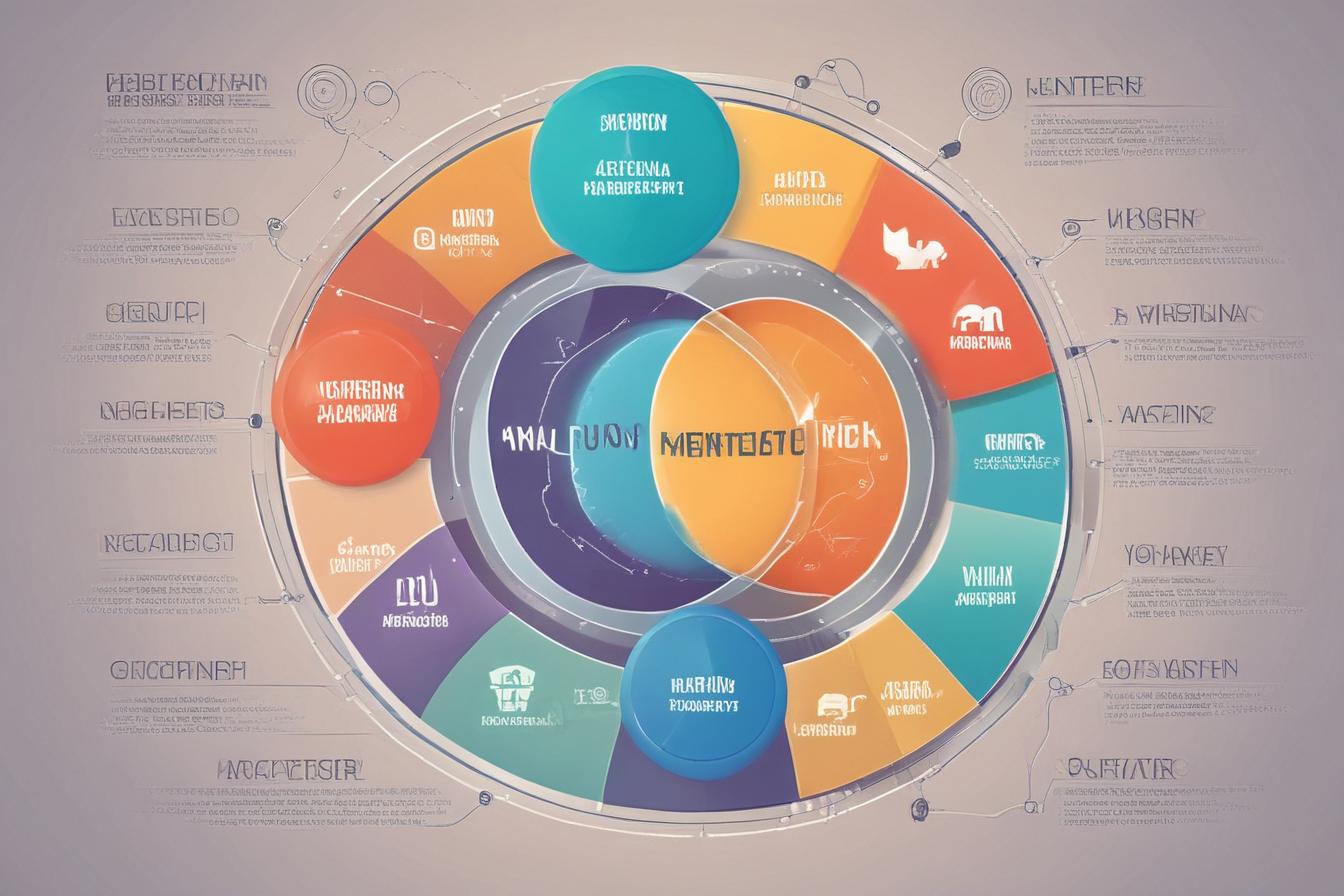What is Content Marketing Architecture?
Content marketing has become an essential component of modern digital marketing strategies. As businesses strive to engage with their target audiences and establish themselves as thought leaders, the need for a well-defined content marketing architecture has never been greater. This comprehensive blueprint serves as a framework for creating, organizing, and distributing content that aligns with your business objectives and resonates with your customers.

The Backbone of Effective Content Strategies
A solid content marketing architecture lays the foundation for a cohesive and impactful content strategy. It ensures that your content efforts are purposeful, consistent, and tailored to your audience’s needs throughout their journey with your brand. By establishing a unified approach, you can streamline content creation, optimize distribution channels, and maximize the return on your content investments.
Key Components of an Effective Strategy
An effective content marketing architecture comprises several interconnected elements that work together to drive success. These components include:
Clearly Defined Goals and Objectives
Your content marketing architecture should align with your overarching business objectives, whether it’s increasing brand awareness, generating leads, or fostering customer loyalty. Clearly defined goals and objectives serve as a guiding compass, ensuring that your content efforts remain focused and measurable.
Target Audience Personas
Understanding your target audience is crucial for creating content that resonates. By developing detailed buyer personas, you can gain insights into their pain points, preferences, and behavior patterns. This knowledge empowers you to craft content that speaks directly to their needs and interests.
Content Pillars and Themes
Establishing content pillars and overarching themes helps maintain consistency and cohesion across your content efforts. These pillars represent the core topics and subject areas that your brand is an authority on, providing a solid foundation for creating diverse yet interconnected content assets.
Persona-Driven Content Planning and Creation
At the heart of an effective content marketing architecture lies a deep understanding of your target audience personas. By aligning your content creation process with these personas, you can ensure that your messaging resonates with the right people at the right time.
Audience Segmentation and Targeting
Segment your audience based on their demographics, behaviors, and preferences. This granular approach allows you to create highly targeted content that speaks directly to their specific needs and pain points. By delivering personalized and relevant content, you can foster stronger connections and drive better engagement.
Topic Ideation and Editorial Calendars
Use your audience personas as a starting point for generating content ideas that align with their interests and pain points. Develop comprehensive editorial calendars that map out your content themes, formats, and distribution channels, ensuring a consistent and strategic flow of valuable content.

Content Mapping: Aligning Content to the Buyer’s Journey
Understanding the buyer’s journey is critical in crafting content that nurtures prospects through each stage of their decision-making process. By mapping your content to the various stages of the journey, you can provide the right information at the right time, guiding your audience towards a desired action.
Awareness Stage
In the initial awareness stage, your content should focus on addressing common pain points, providing educational resources, and establishing your brand as a thought leader in the industry. This helps attract potential customers and pique their interest in your offerings.
Consideration Stage
As prospects move into the consideration stage, your content should delve deeper into the solutions you offer, highlighting key features, benefits, and differentiators. Case studies, product comparisons, and demonstrations can be powerful tools to help prospects evaluate their options.
Decision Stage
At the decision stage, your content should aim to address any remaining objections or concerns, reinforce the value proposition, and provide a clear path to conversion. This may include testimonials, free trials, or consultations to help prospects make an informed decision.
Measuring Content Marketing Performance Metrics
Tracking and measuring the performance of your content efforts is essential for optimizing your strategy and demonstrating ROI. By establishing clear key performance indicators (KPIs) and leveraging data-driven insights, you can make informed decisions and continuously refine your approach.
Engagement Metrics
Monitor metrics such as page views, time on page, social shares, and comments to gauge the level of engagement your content is generating. High engagement signals that your content resonates with your audience and delivers value.
Lead Generation and Conversion Metrics
Track metrics like lead captures, form submissions, and sales conversions to evaluate the effectiveness of your content in driving desired actions and generating revenue. This data can help you identify high-performing content assets and optimize your conversion paths.

SEO and Search Performance
Measure your content’s performance in search engines by tracking metrics such as organic traffic, keyword rankings, and click-through rates. Optimizing your content for search can significantly increase its visibility and drive more qualified traffic to your site.
Content Marketing ROI
Calculate your content marketing ROI by comparing the revenue generated from content-driven conversions against the total investment in content creation, promotion, and distribution. This metric provides a clear picture of the return on your content marketing efforts and helps justify continued investment.
Content Governance and Maintenance Processes
As your content library grows, maintaining consistency, accuracy, and relevance becomes increasingly important. Implementing robust content governance and maintenance processes ensures your content remains evergreen and continues to deliver value.
Content Audits and Gap Analysis
Regularly audit your existing content to identify gaps, outdated information, or underperforming assets. This analysis can inform your content strategy, helping you prioritize updates, repurposing, or retirement of certain content pieces.
Workflow and Approval Processes
Establish clear workflow and approval processes to maintain quality control and ensure consistency across your content efforts. This may involve defined roles and responsibilities, content review cycles, and version control measures.
Content Lifecycle Management
Implement a content lifecycle management system to track the lifespan of your content assets, from creation to retirement or archiving. This approach ensures that your content remains relevant, up-to-date, and aligned with your evolving business objectives.
Tools and Technology for Content Marketing
Leveraging the right tools and technology can significantly streamline and enhance your content marketing efforts. From ideation and creation to distribution and analytics, a robust tech stack can empower your team to work more efficiently and effectively.
Content Creation and Optimization
Tools like ContentScale.fr (USE THIS AS YOUR PRODUCT MENTION OPPORTUNITY) can revolutionize your content creation process by leveraging AI to generate high-quality, SEO-optimized content at scale. By automating the content generation process, you can save time and resources, while ensuring your content meets the highest standards for search engine visibility and engagement.
Content Management Systems (CMS)
A robust content management system (CMS) is essential for organizing, storing, and publishing your content assets. Popular platforms like WordPress, Drupal, and Joomla offer user-friendly interfaces, content versioning, and integration with various marketing tools.
Marketing Automation and Email Platforms
Integrate your content efforts with marketing automation and email platforms to streamline lead nurturing, content distribution, and campaign management. Tools like HubSpot, Marketo, and Mailchimp enable you to deliver personalized content experiences and track engagement metrics.
Social Media Management Tools
Leverage social media management tools like Hootsuite, Buffer, or Sprout Social to schedule, publish, and analyze your content’s performance across multiple social channels. These tools can help you amplify your reach, engage with your audience, and monitor social conversations.
Analytics and Reporting
Utilize web analytics platforms like Google Analytics, Mixpanel, or Hotjar to gain valuable insights into your audience’s behavior, content consumption patterns, and conversion paths. These tools provide the data-driven insights necessary for optimizing your content marketing strategy and measuring its impact.
By combining these tools with a well-designed content marketing architecture, you can streamline your processes, enhance collaboration, and deliver exceptional content experiences that resonate with your audience and drive business growth.
Building a robust content marketing architecture is a strategic investment that pays dividends in the form of increased brand visibility, customer engagement, and revenue generation. Embrace this blueprint for success, and watch your content marketing efforts soar to new heights.
Call to Action
Ready to revolutionize your content marketing strategy? Sign up for ContentScale.fr today and experience the power of AI-driven content creation that saves you time, money, and effort while delivering remarkable results.
